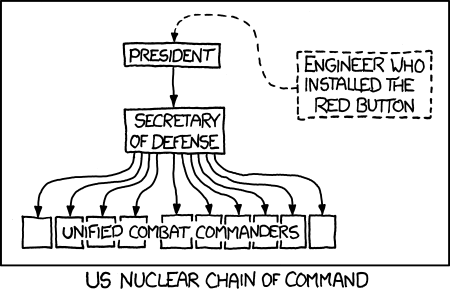 Last Saturday, Charlotte and I joined the Chicago instance of the March for Our Lives. A powerful event in Union Square and a more powerful one across the country. I’m not qualified to offer an opinion on the policy or political dimensions—although I certainly have them. I am qualified, however, to have an opinion on the event as an equally remarkable example of organizational innovation and entrepreneurship. So, I called an audible in my current organizational development class this week and we took a look through an organizational lens.
Last Saturday, Charlotte and I joined the Chicago instance of the March for Our Lives. A powerful event in Union Square and a more powerful one across the country. I’m not qualified to offer an opinion on the policy or political dimensions—although I certainly have them. I am qualified, however, to have an opinion on the event as an equally remarkable example of organizational innovation and entrepreneurship. So, I called an audible in my current organizational development class this week and we took a look through an organizational lens.
Five and one half weeks after the school shooting at Marjory Stoneman Douglas High School in Parkland, Florida, survivors of the day organized and staged a march in Washington, DC and 800 additional locations that drew on the order of a million people to listen to their demands. What lessons and insights can we draw from this effort? What does it tell us about the environment for innovation and activism that is now available to anyone?
A crystal clear and compelling mission is the best starting point for an organization you can get—much better, in fact, than a pile of money. It’s about as strong an example you can find of Simon Sinek’s argument that organization that succeed and thrive “Start with Why” The more powerful the message you articulate, the more degrees of freedom you are granted; the advantage goes to speed over precision and detail in getting that initial message out. This is the power of the social media and internet ecosystem available to be leveraged. The students organizing this effort grabbed the marchforourlives.com domain via godaddy.com on February 17th and announced the march on the 18th. They created a Facebook group page at the same time.
Imagine that initial meeting of the survivors planning this effort just a few days after the event. Maybe there’s a whiteboard or a flipchart with an evolving list of immediate tasks. Everyone has a laptop, tablet, or smartphone. Brainstorm a name, search for a domain, grab it, register it, launch a placeholder website and start building it as the meeting unfolds. You’re crossing items off of your todo list as you’re writing it. Someone starts taking notes in a Google doc or fires up a board in Trello. Your organization is a few hours old and it already has an infrastructure.
As the work to be done gets defined, you can see the transition into an embryonic functional organization. Someone steps up to looks after the new infrastructure. Someone else takes on the communications work. A third takes on investigating the logistics of the march idea that’s just been announced. And finally, someone needs to start work on the the back office details of taking in, tracking, and managing the money that will be required to make this all happen. The outline of the work to be done shapes the organization and the talents and interests of those in the room shape how the work and the people are matched up.
There’s an aspect of entrepreneurial reality that gets skipped or ignored in the conventional tellings of Adam Smith’s pin making or Henry Ford’s Model Ts which is that no one operates in a vacuum. That growing to do list that is driving this organizational bootstrapping effort includes a host of tasks that no one in the room has any idea of how to execute.
Being clear that you don’t know everything is a feature not a bug and our new organization starts to reach out and ask for help. March for Our Lives links up very quickly with Everytown for Gun Safety, an advocacy group funded by Michael Bloomberg, and Giffords: Courage to Fight Gun Violence. This gives our new organization access to the knowledge and experience acquired from other groups who’ve pulled off similar events; those big to dos get transformed into executable tasks and supporting details. They transform their visibility into access to knowledge and resources they don’t have.
As the last several weeks played out, you can see that this is a group that naturally thinks in network terms. For example, sibling marches spawned in multiple cities; the sibling marches shared collateral and elements of the infrastructure, the central organization set general parameters and guidance. The ready-to-hand social media and technology infrastructure let the organization move from idea to execution without having to wait for things to be provisioned or contracts to be negotiated.
This is a remarkable example of just how much today’s ecosystem enables ideas to be transformed into action. It will be interesting to monitor where things go from here independently from the underlying issues—important as they are.



